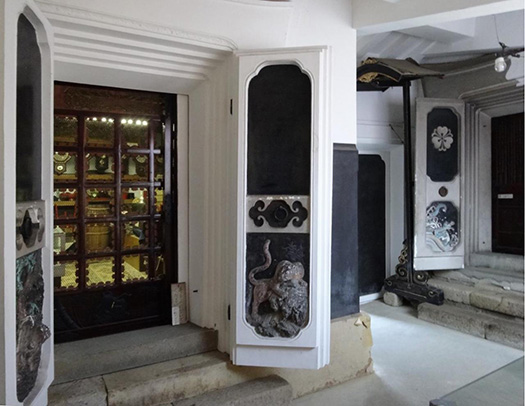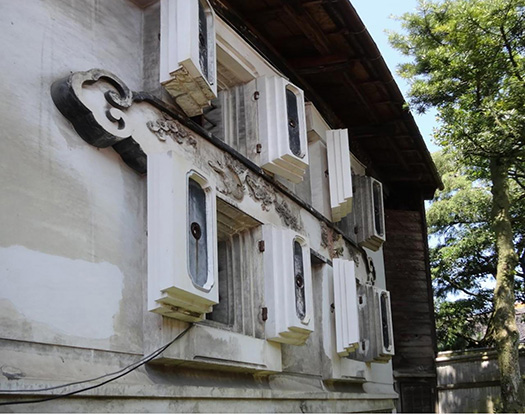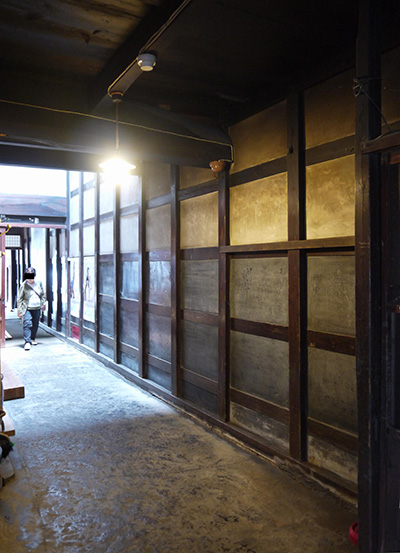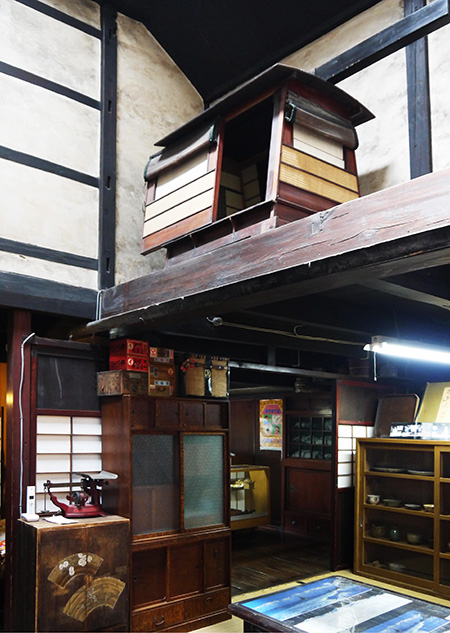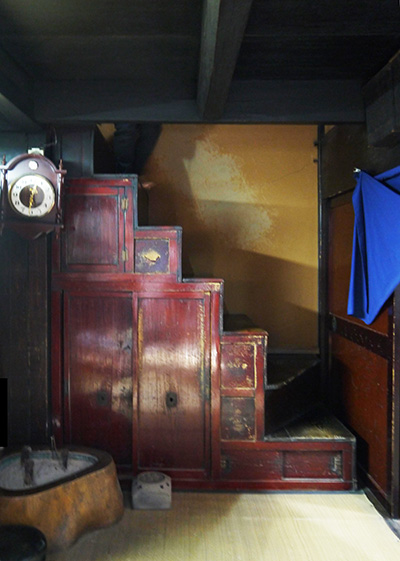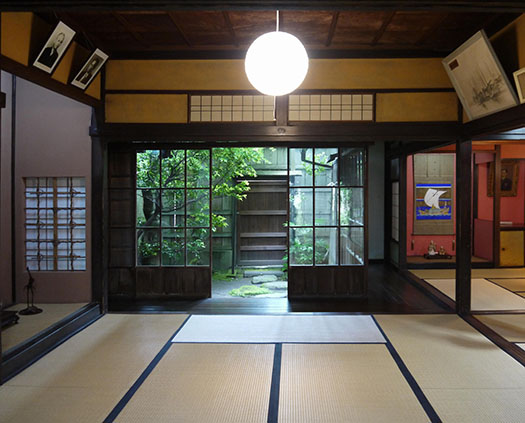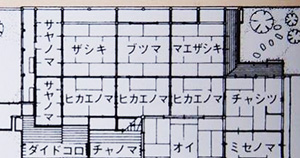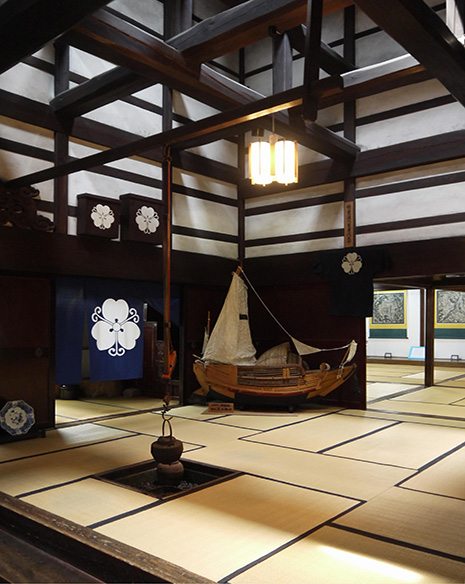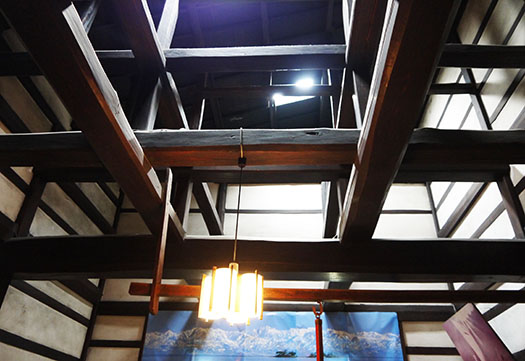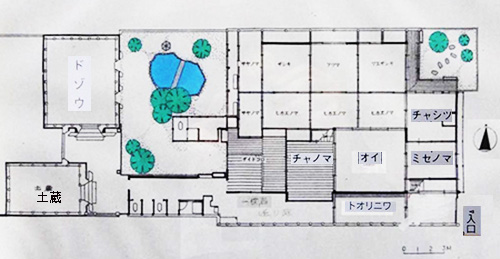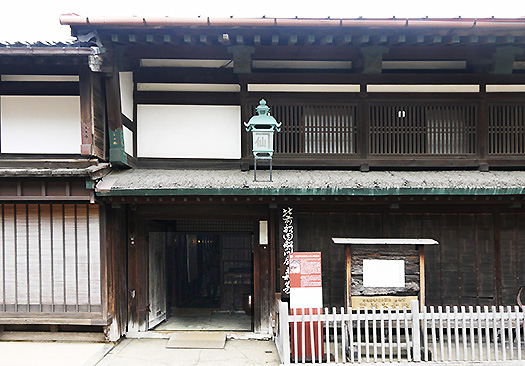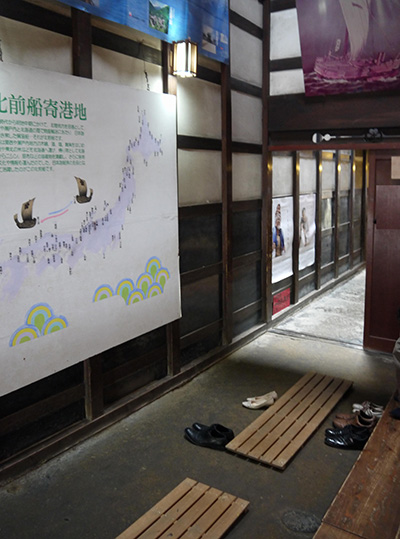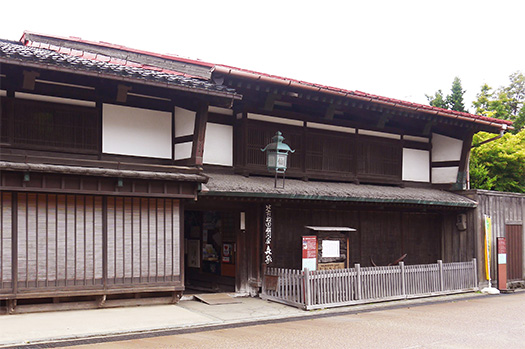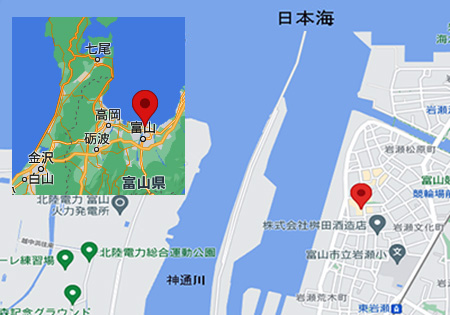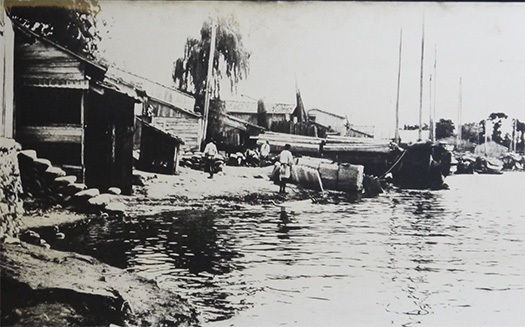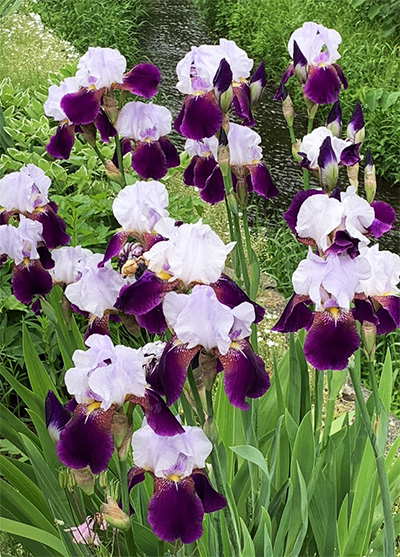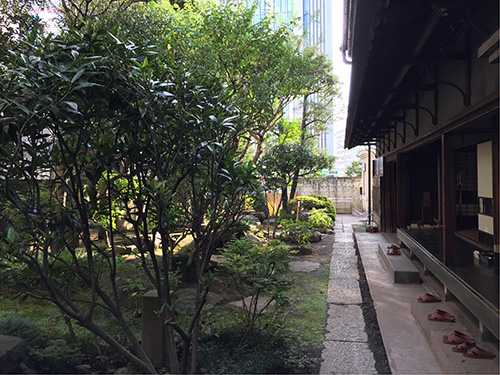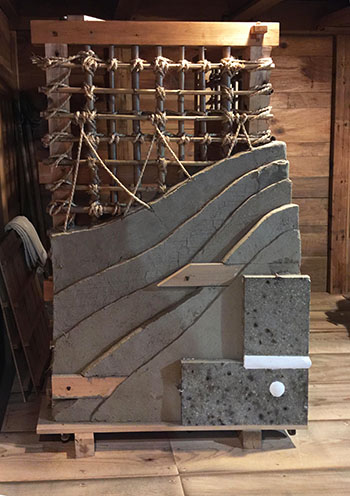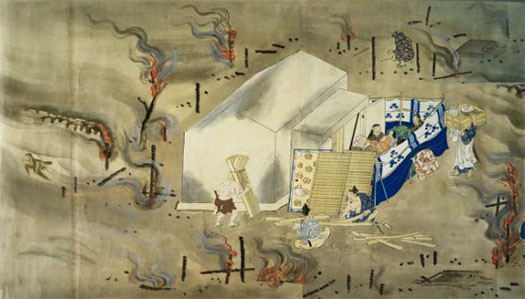
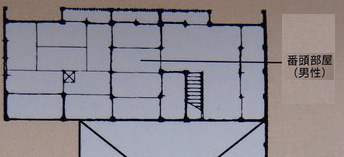
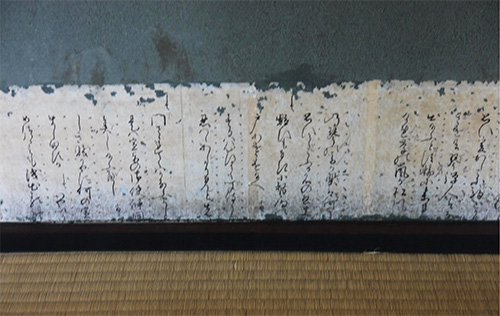
明治初期の廻船問屋その7。
廻船問屋に住み込みの用人さんたちの居室が2階にある。
2階居室はオイの間の吹き抜けを挟んで手前に男性、奥に女中さんたちと
分かれて居住スペースが確保されていた。
女中さんたちの居室はダイドコロ奥の箱階段を上がったところにある。
一方、男性従業員とくに仕事を仕切っている番頭さんの居室。
写真がその居室の様子ですが、床の間もある立派さ。
そして正調の茶室仕立てよろしく聚楽の塗り壁と、壁面下部には腰張り。
これは汚れ防止と剥落防止(衣服等の保護も含む)が主なもの。
こういう仕立てを見ると私室というより一種の応接環境。
北前交易を差配する実務者として、交際の範囲も広く、
そういった交際の必要から茶道の作法を身に付けるようにしたのでしょう。
戦国期の堺衆のなかから茶道が生成していった故実を考えると
そうした交際の場を通じて商談が交わされていったのが日本のビジネス。
江戸末期、明治初年という年代でもこういった仕様が見られる。
そうすると座談・話術といったものが重要な交易ツールだった。
番頭さんたちは各湊ごとの交易相手先への出張も機会が多かったでしょう。
大型の商談が惹起したときに、番頭たるもの、主人に十分な判断材料情報を
上梓する必要もある。情報摂取は最大のポイント。
そうした番頭同士での情報交換は茶のような場で活発に展開しただろう。
ギリギリの交渉のなかで落とし所を探ったりするには、
茶道の場がそういう背景装置として機能し続けていたのか。
あるいは下交渉で激しい値段交渉があった末に
「では続きは一服、茶を差し上げてから・・・」みたいに
最後の交渉と、契約の仮締結くらいまで進めたのではないか。
この番頭座敷は右手が目の前の街道に面しているので、
配置が常に往来客の動向に注力しビジネスを見通せるように意図されている。
この時代の居室で2面が外部に開口しているというのは少ないのではないか。
廻船問屋という業態は現代でいえば情報重視型産業とみえる。
番頭にはそういう才覚が求められたのでしょう。
考えてみると戦国期堺も鉄砲・弾薬などで旺盛な交易ビジネスが盛り上がった。
戦国期はポルトガル船の「意図的な漂着」、戦争道具としての鉄砲の伝来。
領国争奪戦争にもっとも効果的な道具の入手手段として交易にスポットが当たった。
初期は鉄砲自体の輸入からやがて弾の材料である鉛、
そして合掌造りでひそかに生産されていた煙硝などの主要ルートとして
自由な海外交易が活況を呈した。そういう情報は茶の湯を介して行われた。
利休など宗匠は茶の湯の管理者として、同時に情報の管理者でもあっただろう。
鎖国政策を経てそうした日本のビジネス伝統が北前交易に生き延びたともいえる。
もちろん戦国期のビジネス規模と比較しても人口規模が倍増以上と言われるので、
相当に交易は大型化してきてもいたのでしょう。
一国規模の経済範囲とは言え、こうした北前交易があったことで、
その後の明治以降の近代化の素地は完成していたと思える。
English version⬇
[Trading business and tea ceremony culture / Japanese good house ㉞-7]
Ship wholesaler in the early Meiji era No.7.
The living room of the servants who live in the shipping wholesaler is on the second floor.
The second floor living room is with men in the foreground and maids in the back across the atrium between Oi.
The living space was secured separately.
The maids’ living room is up the box stairs at the back of Daidokoro.
On the other hand, the living room of a male employee, especially the clerk who divides the work.
The photo shows the room, but it’s a magnificent alcove.
And like a regular tea room, there is a plastered wall of Juraku and a waistline at the bottom of the wall.
This is mainly for dirt prevention and peeling prevention (including protection of clothes etc.).
Looking at this kind of tailoring, it is a kind of reception environment rather than a private room.
As a practitioner who distributes Kitamae trade, the range of dating is wide,
Perhaps he learned the etiquette of the tea ceremony because of the need for such a relationship.
Considering the fact that the tea ceremony was created from the Sakai people during the Warring States period
It is Japanese business that business negotiations were exchanged through such a place of dating.
Such specifications can be seen even in the late Edo period and the first year of the Meiji era.
Then, discussion and talking skills were important trading tools.
The clerk would have had many opportunities to travel to each Minato’s trading partner.
When a large-scale business negotiation is triggered, give sufficient information to the leader and the master to make a decision.
It is also necessary to go up. Information intake is the biggest point.
Information exchange between such leaders would have been actively developed in a place like tea.
To find a place to go in the last minute negotiations,
Did the tea ceremony place continue to function as such a background device?
Or after a fierce price negotiation in the lower negotiations
Like “Then, let’s take a break, give me some tea …”
I think we have advanced to the final negotiations and the provisional conclusion of the contract.
This banto tatami room has your right hand facing the road in front of you, so
The placement is intended to always focus on the trends of traffic and to see the business.
It seems that there are few rooms in this era that have two sides open to the outside.
The business format of a shipping wholesaler can be seen as an information-oriented industry in modern times.
That kind of talent would have been required of the clerk.
When you think about it, Sakai during the Warring States period also had a vigorous trading business with guns and ammunition.
During the Warring States period, Portuguese ships were “intentionally washed ashore” and guns were introduced as war tools.
Trade was spotlighted as the most effective means of obtaining tools for the territorial war.
Initially from the import of the gun itself, lead, which is the material of the bullet,
And as a main route such as smoke glass that was secretly produced by gassho-zukuri
Free foreign trade was booming. Such information was provided via the tea ceremony.
The masters such as Rikyu would have been the managers of the tea ceremony and the information at the same time.
It can be said that the Japanese business tradition survived the Kitamae trade through the isolation policy.
Of course, it is said that the population size has more than doubled compared to the business scale during the Warring States period, so
Trade would have been getting bigger.
Even though it is a nation-wide economic range, the fact that there was such trade in Kitamae
It seems that the foundation for modernization after the Meiji era was completed.
Posted on 6月 19th, 2021 by 三木 奎吾
Filed under: 住宅マーケティング, 日本社会・文化研究 | No Comments »


